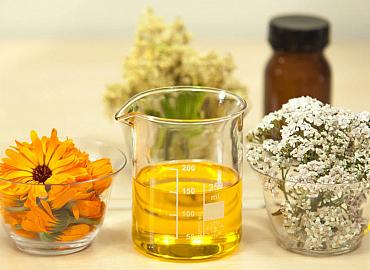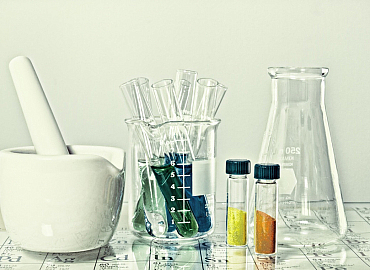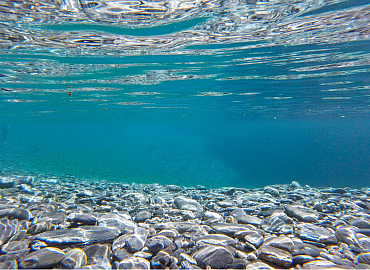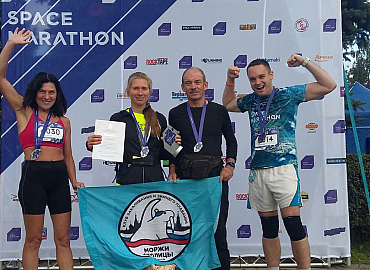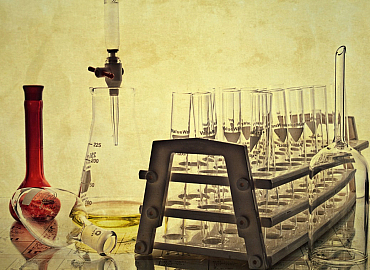The expression “calcination” can mean some different deterioration processes in organs and tissues, which have similar clinical symptoms like pain, knuckles cracking, deformation etc. It is a commonly used name for osteophyte (bone spurs) developing, a bone tissue proliferation while destructive pathology of locomotor system, which is a protective body response on the distortional damaging.
Calcination develops as a result of different disorders of water-lipid balance. This way in case of gout body can’t keep up with excreting of uric acid and it salts, the urates.
Calcium exchange disorders that related to calcium salting-up from the solution and its depositing in tissues are specific to calcinosis.
Calcium depositing development mechanism
The main cause that leads to calcinosis developing is water-salty exchange disorders.
As mentioned above, calcium exchange disorders lead to calcinosis, the calcium depositing in tissues and internal organs. At high concentration of calcium salt in blood, a hypercalcemia, they can settle out at arteries, heart, lungs, kidneys and stomach. The result of local calcium exchange disorders while degenerative-dystrophic changes in tissues is a salt depositing in muscles, skin and bones. The most vulnerable areas are major and small joints, spinal column.
The gout is a result of the purine metabolism disturbance then body doesn’t keep up with uric acid excreting, which concentration in blood rises and leads to uric salts depositing at joints, kidneys, soft issues, injures them, provokes inflammatory and function disorders.
The common risk factors of mineral exchange disbalance developing are the following:
- Unhealthy diet. Overfeeding, spicy, fat, salted food;
- Dehydration;
- Bad habits: smoking, alcohol abuse;
- Sedentary lifestyle;
- Overweighting;
- Genetic predisposition;
- Internal organ diseases, related to internal and external secretion gland disorders;
- Blood, skin, kidney diseases;
- Prolonged medication taking;
- Hypothermia.
The calcium depositing symptoms
The first signs of calcium depositing are pain and knuckle cracking in case of joint calcium depositing. On the early stages of pathology developing the pain syndrome is minor. It usually appears after long lasting physical activity and disappears while rest. Calcium depositing is accompanied by inflammation as evidenced by the temperature rise in injured area and skin flushing.
On the latest stages of disease developing joints surrounding muscles and nerve endings get injured that lead to joint numbness and mobility restriction.
Bisphosphonate creams by Repharm
-
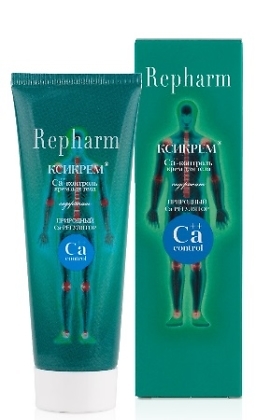
KSICREAM CA-CONTROL Calcium Body Cream, 70 g
550.00 ₽550 руб.
-
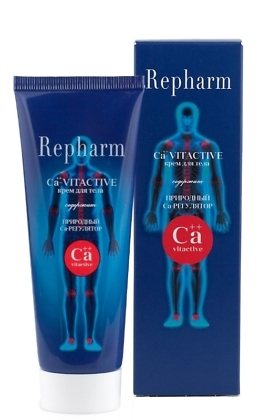
CA-VITACTIVE Calcium Body Cream, 70 g
560.00 ₽560 руб.
-
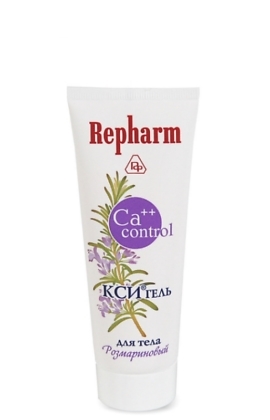
KSIGEL CA-CONTROL Rosemary Calcium Body Cream, 70 g
440.00 ₽440 руб.In stock in
Prices in our partner's shops may not be the same as ours
Diagnostics and treatment of calcination
The modern medicine has a variety of diagnostic methods for calcination revealing, which allow not only verify disease, but determine its stage and degree of tissues injury. Among them are X-ray, radiography, arthroscopy, magnetic resonance imaging and lots of laboratory analysis.
Calcination treatment is long-lasting and complex procedure, which combines different methods like healthy lifestyle, diet, remedial gymnastics, medicine taking etc.
Pharmacological therapy influences on pathological process on every stage: balances salt exchange, reduces inflammatory, reduces pain, stimulates regeneration etc. Prescribed medications can be nonsteroidal anti-inflammatory drugs, hormone preparations, multitargeted bisphosphonic complexes, which are used in accordance with indications and encourage salts exfoliation, restoring of damaged tissues, reducing pain and inflammatory.
Body creams for calcination treatment
While treating calcination it can be useful to apply ointments and creams with bisphosphonates for local application. They can be effective for prophylactic as well. In contrast to pills and injections, cream application doesn’t cause side effects and they are applicable for prolonged use.
One of a kind bisphosphonic creams, effective for calcination treatment, are KSICREAM and CA-VITACTIVE by Repharm. Their efficiency is related to the active calcium-regulating complex in its composition, which prevents calcium depositing in soft tissues and joints. Bisphosphonates are the natural intracellular calcium exchange regulators, which influence on the nerve endings, reduce pain, strengthen blood vessels walls, reduce their permeability and removes inflammatory.
 16 Apr 2017 г.
16 Apr 2017 г. 

